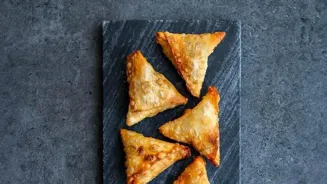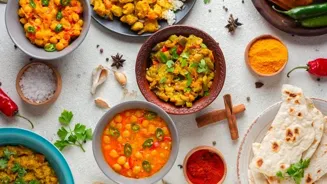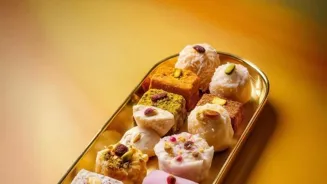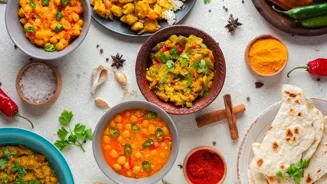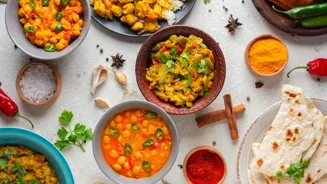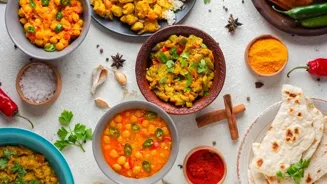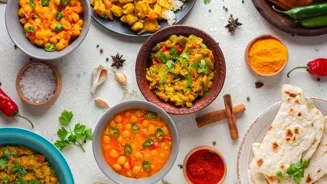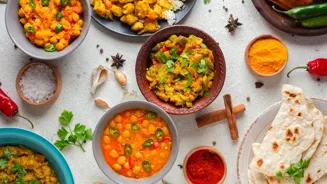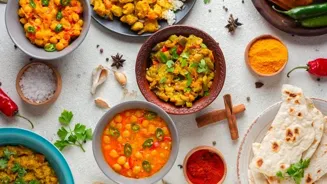Unveiling the Secrets of Samosas: A Culinary Journey of India’s Beloved Snack! Dive into the origins, fillings, shapes, and more!
The samosa. Just the name conjures up images of piping hot, triangular pockets
of deliciousness, doesn't it? Crispy on the outside, filled with a savory mixture of potatoes, peas, and spices on the inside, it's more than just a snack; it's an emotion.
From bustling street corners to fancy restaurants, the samosa reigns supreme as one of India's most beloved treats. But how much do you really know about this iconic snack? Prepare to be amazed as we delve into some fascinating facts about the humble samosa.
You might just discover something new about your favorite tea-time companion! From its surprising origins to regional variations that will tantalize your taste buds, get ready for a samosa deep dive. We promise, it will be more satisfying than that first bite into a perfectly cooked samosa!
The samosa originated from the Middle East, not India, evolving through trade routes
First off, let's talk about where the samosa actually comes from. Believe it or not, our beloved samosa isn't even Indian in origin! It's widely believed it travelled all the way from the Middle East.
Merchants traveling along the ancient Silk Road introduced the ‘sambusak’ (its original name) to India sometime between the 13th and 14th centuries. The ‘sambusak’ was a pastry filled with meat, but over time, it was adapted and vegetarianized to suit Indian tastes and religious sensibilities.
Imagine that! A snack we associate so strongly with India actually has roots stretching back to ancient trade routes and far-off lands. That little triangular package holds a history lesson within its flaky crust. Who knew a humble snack could be so well-traveled?
It's a testament to how food evolves and adapts as it moves across cultures, becoming something entirely new and delicious in the process.
Infinite samosa fillings: classic to unique, spicy to sweet, a quest for perfection
Now, regarding those delicious fillings within the samosa's crispy shell, the variations are practically endless! While the classic potato and pea filling is the most common, regional adaptations offer a mind-boggling array of flavors.
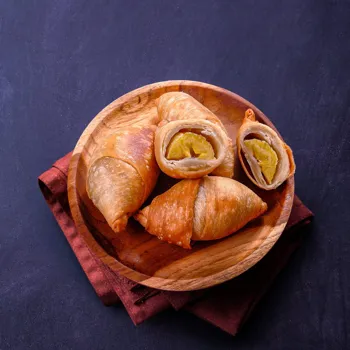
In Punjab, you might find samosas filled with paneer (Indian cheese). In other regions, you'll encounter versions with lentils, cauliflower, or even dried fruits and nuts for a touch of sweetness.
Then there are the spicy variations, those that’ll make your eyes water, usually with a pinch of amchur to give it chatpata zing. And don’t forget the chutney that goes on top. Mint? Tamarind? The best? All of them equally good!
And that's not even including the unique variations that chefs are constantly inventing! Each region and even each samosa vendor has their own secret recipe, something special that sets their samosas apart from the rest. It's a quest to find the perfect samosa, one crispy, flavorful bite at a time.
Samosas come in various shapes, offering different eating experiences
And speaking of shapes, while the triangular samosa is the most recognizable, did you know that samosas come in different forms? You will usually find them at social occassions. While the triangular shape seems to be the winner, many places still vary there dishes.
In some places, you'll find cone-shaped samosas. Others are half-moons, depending again on the region and the vendor. The shape often depends on the type of pastry used and the method of folding.
But regardless of the shape, the ultimate goal remains the same: to create a perfect package of crispy goodness filled with flavorful deliciousness. Each shape offers a slightly different eating experience, with varying ratios of crust to filling. It actually goes to show the versalitity it has.
It’s a testament to the creativity and skill of the people who make them. Also, imagine trying to do all the different types yourself!
Importance of chutneys in enhancing samosa experience
Also, no samosa experience is complete without the perfect dipping sauce. The chutneys served with samosas are just as important as the samosa itself. Mint-coriander chutney is the classic choice, offering a cool and refreshing counterpoint to the samosa's warm spices.
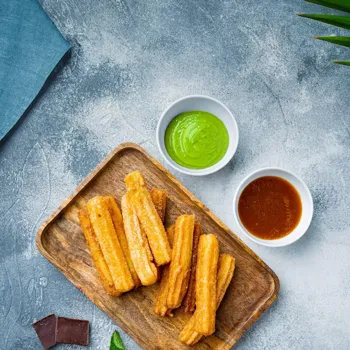
Tamarind chutney, with its sweet and tangy flavor, is another popular option. And then there's the spicy green chili chutney, for those who like a fiery kick. Each chutney complements the samosa in its own way, enhancing the overall flavor profile.
Some people even like to mix and match chutneys, creating their own unique flavor combinations. The right chutney can elevate a good samosa to an exceptional one. It’s all about finding the perfect balance of flavors. Also if you want, you can make your own chutney.
This makes for a more personalized experience.
Making a perfect samosa requires skill, precision, and love
Most people think they can just make a samosa any day. But the samosa-making process is actually quite labor-intensive. From preparing the dough for the crust to cooking the filling and carefully folding the samosas, it requires skill, patience, and a lot of love.
What they use to make the flour and the filling is crucial. A slightly different amount and it changes the whole dynamic. The dough needs to be just right to get that perfect crispy texture when fried. And the filling has to be cooked perfectly to bring out all the flavors.
Even the folding technique requires precision to ensure that the samosas don't burst open during frying. Every step in the process is essential for creating a truly delicious samosa! From personal cooking, to commercial, most places have the steps down to the tee.
Samosa: A rich history, diverse variations, culinary masterpiece connecting cultures
So, the next time you bite into a crispy, flavorful samosa, take a moment to appreciate its rich history, diverse variations, and the skill that goes into making it. There is so much to dive into when it comes to samosas. As you taste it, you can think of it’s evolution.
It’s more than just a snack; it's a culinary masterpiece that has stood the test of time. It's a reminder of the power of food to connect cultures and bring people together.
Whether you prefer yours with potato and peas, paneer, or something more exotic, there's a samosa out there for everyone to enjoy. So go ahead, indulge your cravings and savor every bite of this iconic Indian snack.
AI Generated Content. Glance/InMobi shall have no liability for the content